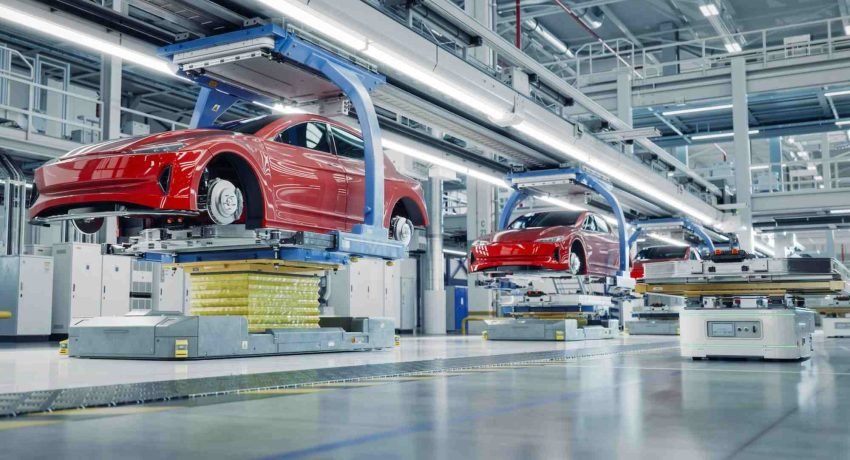Introduction
The automobile industry stands as one of the world’s most powerful and transformative sectors, shaping how we live, work, and connect. It’s more than just vehicles — it’s about innovation, progress, and global economic growth. When people ask “Why Automobile Industry?” the answer lies in how deeply cars influence our daily lives and the global economy. This article explores the roots, evolution, and importance of this massive sector while answering key questions that millions of people search online.
Understanding Why Automobile Industry Matters
The automobile industry fuels economies, provides employment, and drives technological advancement. It represents the foundation of global trade and mobility. In simple terms, it connects people, markets, and nations. Every road you see, every product delivered, and every journey taken is influenced by the automobile sector.
The Why Automobile Industry discussion often starts with economics. In many countries, including the U.S., Japan, and Germany, the auto sector contributes billions of dollars annually to GDP. It supports hundreds of related industries — from steel manufacturing and electronics to oil, batteries, and software. This interconnected web of industries highlights why understanding this field is essential for both professionals and everyday consumers.
The Historical Evolution of the Automobile Industry
The history of the automobile industry is a story of human progress. From Karl Benz’s first gasoline-powered car in 1886 to the rise of electric vehicles, every innovation has reshaped modern life.
Early Beginnings
In the late 19th century, the invention of the internal combustion engine sparked a revolution. By the early 20th century, Henry Ford’s assembly line in the U.S. transformed production methods, making cars affordable for millions. This marked the true beginning of mass mobility — a defining moment in understanding why automobile industry became a central pillar of modern economies.
Post-War Expansion
After World War II, the automobile industry boomed globally. Car ownership became a symbol of freedom and prosperity. Japan, Germany, and the United States led innovation, producing vehicles that blended design, performance, and reliability. Automobiles began influencing not just economies but also cultures — from Hollywood movies to global fashion and advertising trends.
The Modern Era
Today’s automobile industry is digital, global, and environmentally conscious. Companies like Tesla, Toyota, and Volkswagen are investing heavily in electric and autonomous vehicles. The integration of AI, robotics, and sustainability principles reflects how the industry continues to evolve with societal needs. This modern shift further explains Why Automobile Industry remains central to global progress.
Economic Impact: The Engine of Global Growth
When people ask Why Automobile Industry is important, the economic aspect is unavoidable. This sector contributes over 3% of the world’s GDP and employs more than 60 million people directly and indirectly. Every vehicle manufactured triggers economic activity in dozens of related sectors.
Automobile production stimulates demand for materials like steel, rubber, glass, and electronics. Logistics companies, dealerships, and mechanics all depend on it. Moreover, the digital transformation of vehicles — such as software updates, sensors, and smart systems — has birthed a new wave of tech startups and innovation hubs around the world.
Technological Innovation: Driving the Future
The Why Automobile Industry Guide reveals that this sector isn’t static; it’s dynamic, futuristic, and constantly innovating. Modern cars are more like computers on wheels — integrating artificial intelligence, IoT, and advanced safety systems.
Electric vehicles (EVs) have become the new frontier. Governments worldwide are promoting EV adoption to reduce emissions and fight climate change. Autonomous vehicles are another groundbreaking development, with companies testing driverless technology to make roads safer and more efficient.
This intersection of sustainability and innovation shows how the industry adapts to humanity’s biggest challenges — from environmental conservation to digital transformation.
Environmental Challenges and Sustainable Solutions
While cars have historically been linked to pollution, the industry is transforming its approach. Green technology and renewable energy integration are now top priorities. Electric and hybrid vehicles, along with cleaner fuel alternatives like hydrogen, are reshaping perceptions about transportation’s environmental impact.
Governments are implementing stricter emission standards, and consumers are becoming more eco-conscious. Manufacturers are investing in recyclable materials, efficient engines, and renewable supply chains. These efforts explain another layer of Why Automobile Industry remains vital — it’s at the heart of sustainability efforts that can shape our planet’s future.
Cultural and Social Influence
Beyond economics and technology, the automobile industry holds deep cultural significance. Cars represent independence, style, and identity. Throughout history, vehicles have inspired movies, music, and fashion. Iconic car brands have become symbols of success and aspiration.
In the 21st century, car-sharing platforms, ride-hailing apps, and digital connectivity have reshaped how people perceive mobility. Instead of owning a vehicle, many now value access and convenience — a shift that shows how adaptable the industry is to changing lifestyles.
Globalization and International Trade
Another important aspect of Why Automobile Industry is globalization. Car manufacturing is truly global — a single car can have parts made in ten different countries. Automakers rely on global supply chains, advanced logistics, and cross-border trade.
Countries like China, India, and Mexico have emerged as major manufacturing hubs. This international collaboration not only drives efficiency but also strengthens diplomatic and economic relationships between nations.
Future Trends in the Automobile Industry
As technology evolves, the future of the automobile industry looks exciting and transformative. Experts predict that by 2035, most new vehicles will be electric or hybrid. Artificial intelligence will enhance driver safety, and smart cities will integrate vehicles into connected transport systems.
The rise of shared mobility and subscription-based vehicle ownership models reflects how digital transformation is changing user behavior. Automakers are focusing on software services as much as mechanical components, marking a shift from products to mobility solutions.
Challenges the Industry Faces
Despite its success, the automobile industry faces significant challenges. Supply chain disruptions, semiconductor shortages, and economic instability affect production. Additionally, environmental regulations require massive investment in research and development.
Consumer behavior is also shifting rapidly. Younger generations prioritize sustainability and digital convenience over traditional car ownership. Automakers must balance affordability, innovation, and ecological responsibility — a demanding but necessary challenge to stay relevant.
Why Automobile Industry Is Essential for Development
In developing countries, automobiles drive infrastructure growth, trade, and social development. Improved transportation networks create opportunities for education, healthcare, and commerce. Rural communities gain access to resources and employment through better mobility.
This broader perspective highlights Why Automobile Industry is a cornerstone of national progress. It connects rural and urban economies, enhances logistics, and fosters innovation across multiple disciplines.
Real-World Insights and Reliable Sources
Leading publications such as The New York Times frequently highlight how technological evolution, environmental responsibility, and market competition shape the auto sector. Industry reports and expert analyses consistently show that cars are not just vehicles — they are symbols of progress and pillars of modern society.
For more detailed insights, readers can explore the complete Why Automobile Industry resource. It offers expert perspectives on trends, data, and strategies for understanding this vital sector. Additionally, the Why Automobile Industry Guide provides in-depth explanations about innovation, investment, and future opportunities.
FAQs
What is the importance of the automobile industry?
The automobile industry supports global economic growth, creates jobs, and enhances human mobility. It drives innovation in technology, manufacturing, and sustainability.
How does the automobile industry impact the environment?
While vehicles contribute to emissions, the industry is rapidly transitioning toward eco-friendly alternatives such as electric and hybrid models.
What are the main challenges facing the automobile industry today?
The key challenges include supply chain disruptions, rising production costs, environmental regulations, and evolving consumer demands for sustainable mobility.
Why is the automobile industry important to a country’s economy?
It generates revenue, supports related industries, and creates millions of jobs worldwide. Moreover, it stimulates innovation and international trade.
What is the future of the automobile industry?
The future lies in electric vehicles, smart connectivity, and sustainable mobility solutions. Autonomous driving technology will further transform how we travel.
The automobile industry has been a cornerstone of human progress for more than a century. It continues to evolve — adapting to digital trends, environmental challenges, and global consumer needs. The sector’s combination of innovation, sustainability, and cultural influence explains perfectly Why Automobile Industry remains vital for global development.
As we move toward a future of electric and autonomous mobility, one thing is clear: the automobile industry will continue to drive the world forward — economically, technologically, and socially.
If you want to explore the deeper aspects of this fascinating sector, visit Why Automobile Industry for expert insights, market updates, and the latest innovations shaping our roads and our future.









